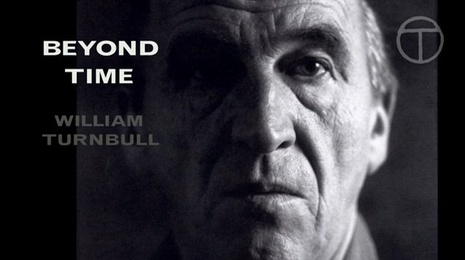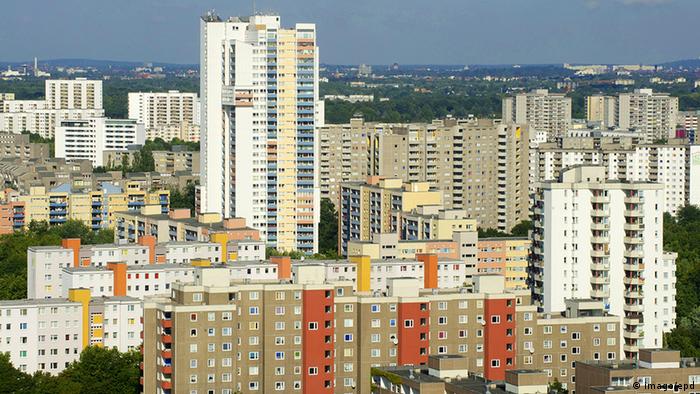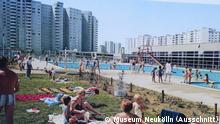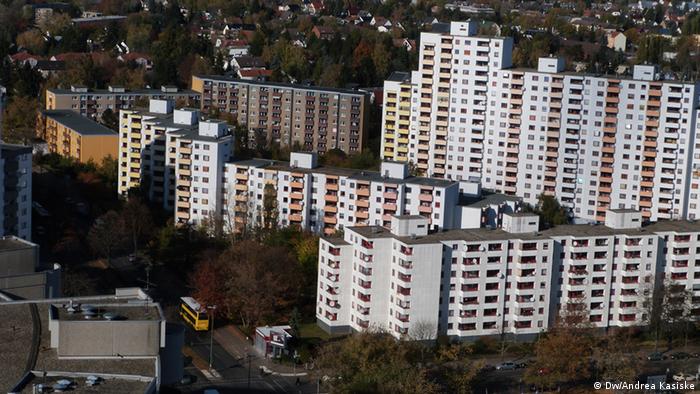藝術
讓互聯網用戶免費看到世界上的一切藝術品
報道 2012年11月23日
音樂愛好者都知道,在網上找到新歌的方法有無數種:比如瀏覽數碼播放列表,收聽像Pandora這樣兼顧音樂推薦功能的流媒體電台。同樣,Netflix也會根據用戶以前看過的電影,定期向他們推薦合適的浪漫喜劇或者恐怖片。
但是迄今為止,網上一直都沒有服務於藝術愛好者,幫助他們發現藝術品的自動推薦系統——沒有“如果你喜歡傑克遜·波洛克(Jackson Pollock)的《No.1》,你可能也會喜歡馬克·羅斯科(Mark Rothko)的《No.18》”這樣的指南。
然後Art.sy出現了,這家創業公司的網站在周一正式向公眾開放。Art.sy網站是一個內容豐富的免費藝術圖片庫,也是一個在線藝術欣賞指南,
它的設想是,用戶喜歡圖片驅動型的網站,比如Tumblr和Pinterest,現在他們已經準備好花費大把時間,在顯示器和平板電腦上瀏覽油畫和雕塑圖
片,特別是在“一鍵幫助”功能的指引下。
Art.sy的投資者包括藝術界與科技界的一些名人。該公司利用數百萬美元資金,經過兩年時間私測,打造出這個網站,希望它之於視覺藝術就如同Pandora 之於音樂,Netflix之於電影:變成一個發現、快樂和教育的源泉。
通過與275家畫廊,50所博物館和藝術機構合作,Art.sy已經將2萬張圖片數碼化後存入它的資料系統中,即所謂的“藝術基因組項目”(Art Genome Project)。但隨着這個平台的拓展,Art.sy也引發了一個問題,數碼分析技術應該如何(或者,能否)應用到視覺藝術上。算法能夠闡釋藝術嗎?
耶魯大學藝術學院院長羅伯特·斯托爾(Robert Storr)對此存有疑慮,他說:“這個系統非常依賴於數據信息,做決定的人是誰,標準是什麼,這些標準背後的文化假設又是什麼。”斯托爾曾擔任過紐約現 代藝術博物館的繪畫和雕塑館長。在藝術理解方面,他進一步說:“我敢肯定它會過於簡單化”。
技術本身至少是存在擴展潛力的。要讓計算機提供適當的建議,你就必須讓它掌握專家級的人工判斷力,這個過程要從“加標籤”開始:給機器一些代碼,讓 它能區分出比如文藝復興時期的肖像和現代主義滴畫之間的差異,然後,它就可以對浩瀚無邊的作品進行分類、比較,並找出作品之間的聯繫。
使用什麼代碼,如何使用,這是由“藝術基因組項目”的一個小組來決定的。這個小組由12名藝術史學家組成,負責人馬修·伊斯雷爾(Matthew Israel)今年34歲,擁有紐約大學藝術學院的藝術和考古博士學位。一些標籤(Art.sy把標籤稱為“基因”,它已經認可了大約800種“基因”, 數量每天都有增加)代表的屬性相當客觀,比如作品所屬的歷史時期和地區,是具象的還是抽象的,或者所屬的既定類別,比如立體主義、法蘭德斯肖像畫或是攝影 類。
其他標籤則非常主觀,甚至有些古怪。比如,對於當代藝術,Art.sy的策展人會加上“全球化”和“文化評析”這樣的標籤,以提供意識形態語境。 “當代記憶痕迹”標籤用得比較靈活,添加在了中國觀念藝術家蔡國強,以及攝影師、電影人馬特·桑德斯(Matt Saunders)的一些作品上。
一幅畢加索可能會被標記為“立體主義”、“抽象繪畫”、“西班牙”、“法國”、“愛”,這些標籤都可以在Art.sy網站上看到、搜索到。傑克遜· 波洛克的畫作通常會被加上“抽象藝術”、“紐約畫派”、“噴濺/滴灑”、“重複”和“過程性創作”的標籤。可以預見的是,它們中的一些會被添加在波洛克同 時代畫家羅伯特·馬瑟韋爾(Robert Motherwell)和威廉·德庫寧(Willem de Kooning)的作品上,但其他時期和風格的藝術家也有可能,比如塔拉·多諾萬(Tara Donovan),他用堆疊和多層塑料泡沫及紙板製作的當代抽象雕塑也被打上了“重複”標籤。
在分類的同時,每件作品也會獲得一個1到100之間的分數。一件安迪·沃霍爾(Andy Warhol)的作品可能在“波普藝術”中得高分,而一件“後沃霍爾式”作品依據其影響力,得分會有很大差異。軟件可以根據顏色等基本視覺品質來過濾圖片,但人工的判斷才是靈魂。
“這裡面是有個活人在處理的,他們要親手把數字一個個敲到相關的空格里,”伊斯雷爾先生說。
策展方面的挑戰比技術的複雜性更關鍵。Art.sy工程部門的負責人、 今年35歲的丹尼爾·杜布羅肯尼(Daniel Doubrovkine)說:“我們清楚數據比算法重要得多。你如何用一台機器挑選出讓人感覺‘溫暖’的作品呢?我們不打算那麼做。”
同樣,Pandora也有一屋子的音樂學家來解構每首曲子,他們分析出的東西被輸入到“音樂基因組項目”,這是一個算法,可以根據用戶的口味,以及 他們給每段音樂評的分數向他們推薦歌曲(Pandora的首席執行官喬·肯尼迪[Joe Kennedy]是Art.sy的顧問之一)。
但Art.sy的目的是利用一個目錄,從看似來自不同世界的作品中找出聯繫,這個目錄中的作品來自大英博物館、華盛頓的美國國立畫廊、洛杉磯當代藝 術博物館等等機構。庫珀-休伊特國立設計博物館是Art.sy最新的合作夥伴之一,它位於曼哈頓,是史密森尼博物院下屬機構。其數字和新興媒體總監賽博· 陳(Seb Chan)表示,庫珀-休伊特已經往這個目錄中添加了藏品圖片,對於Art.sy的技術以及它所找出的聯繫來說,這會是一個考驗。
陳先生說,“在看到一隻十七世紀的勺子後,它向你推薦了一幅畫,”這在文化層面上意味着什麼呢?Art.sy的員工已經預料到會有這樣的問題出現,他們用一個博客來解釋其機制。
Art.sy首席執行、兼創始人卡特爾·克利夫蘭(Carter Cleveland)今年25歲。他在普林斯頓大學讀大四的時候,由於找不到適合的圖片來裝飾宿舍房間,產生了創辦Art.sy的念頭。畢業後,克利夫蘭 在父母幫助下——他父親是一位藝術作家,母親是一位金融家——終於吸引了像畫廊主拉里·高古軒(Larry Gagosian)這樣的合作夥伴,以及達莎·朱可娃(Dasha Zhukova)和鄧文迪這樣的支持者。鄧文迪是魯伯特·默多克夫人,她熱心幫忙引薦克利夫蘭。谷歌公司的埃里克·施密特(Eric Schmidt)和Twitter聯合創始人傑克·多爾西(Jack Dorsey)等人也在Art.sy投入了資金,曾任現代藝術博物館繪畫和雕塑首席策展人的約翰·埃爾德菲爾德(John Elderfield)則擔任了Art.sy的顧問。
在他們的支持下,克利夫蘭大膽追尋自己的Art.sy宏大夢想。他說他要“讓互聯網用戶免費看到世界上的一切藝術品。”這既是該公司的座右銘,可能也是它的盈利計劃。Art.sy希望賺取銷售傭金,並從跟藝術機構的合作中獲得收入。
但Art.sy還遠未獲得世界上一切藝術品的圖片——另一個圖片庫“谷歌藝術項目”的規模是它的兩倍——收藏量有限,基因組的活力也就受到制約。對 於希臘或羅馬古物愛好者來說,Art.sy目前還沒有什麼用處。這種缺憾,就好比是Netflix電影庫沒有希區柯克的作品一樣。此外,耶魯大學的斯托爾 還擔心Art.sy數據庫有太多漏洞,導致裡面充斥着不好的東西。
“這個網站上混雜着一些非常糟糕的藝術品,不配推薦給任何人。”斯托爾在仔細查看過Art.sy網站後說。
Art.sy的創始人們則認為,對藝術的理解總是在不斷發展,所以它不可能成為一個決定性的推薦系統。“你更應該把它的推薦看成是‘有趣的出發點’。”網站首席運營官塞巴斯蒂安·奎里克(Sebastian Cwilich)說。
庫珀-休伊特的陳先生說,Art.sy的意圖不是取代博物館、畫廊或書籍,而是要幫助公眾,特別是藝術新手,擴展他們的品味。“你無需成為一個學 者,也有機會發現令自己着迷的藝術品,”他說,“你去博物館瀏覽作品——其全部意義就是偶然中撞到喜歡的東西。‘藝術基因組’是提供這種意外邂逅的另一種 方式。
“在我們的文化中,”他補充說,“尤其是那些把互聯網融入生活的人中——包括所有25歲以下的年輕人——這是一種很自然的瀏覽方式。”
但是迄今為止,網上一直都沒有服務於藝術愛好者,幫助他們發現藝術品的自動推薦系統——沒有“如果你喜歡傑克遜·波洛克(Jackson Pollock)的《No.1》,你可能也會喜歡馬克·羅斯科(Mark Rothko)的《No.18》”這樣的指南。
相關文章
Art.sy的投資者包括藝術界與科技界的一些名人。該公司利用數百萬美元資金,經過兩年時間私測,打造出這個網站,希望它之於視覺藝術就如同Pandora 之於音樂,Netflix之於電影:變成一個發現、快樂和教育的源泉。
通過與275家畫廊,50所博物館和藝術機構合作,Art.sy已經將2萬張圖片數碼化後存入它的資料系統中,即所謂的“藝術基因組項目”(Art Genome Project)。但隨着這個平台的拓展,Art.sy也引發了一個問題,數碼分析技術應該如何(或者,能否)應用到視覺藝術上。算法能夠闡釋藝術嗎?
耶魯大學藝術學院院長羅伯特·斯托爾(Robert Storr)對此存有疑慮,他說:“這個系統非常依賴於數據信息,做決定的人是誰,標準是什麼,這些標準背後的文化假設又是什麼。”斯托爾曾擔任過紐約現 代藝術博物館的繪畫和雕塑館長。在藝術理解方面,他進一步說:“我敢肯定它會過於簡單化”。
技術本身至少是存在擴展潛力的。要讓計算機提供適當的建議,你就必須讓它掌握專家級的人工判斷力,這個過程要從“加標籤”開始:給機器一些代碼,讓 它能區分出比如文藝復興時期的肖像和現代主義滴畫之間的差異,然後,它就可以對浩瀚無邊的作品進行分類、比較,並找出作品之間的聯繫。
使用什麼代碼,如何使用,這是由“藝術基因組項目”的一個小組來決定的。這個小組由12名藝術史學家組成,負責人馬修·伊斯雷爾(Matthew Israel)今年34歲,擁有紐約大學藝術學院的藝術和考古博士學位。一些標籤(Art.sy把標籤稱為“基因”,它已經認可了大約800種“基因”, 數量每天都有增加)代表的屬性相當客觀,比如作品所屬的歷史時期和地區,是具象的還是抽象的,或者所屬的既定類別,比如立體主義、法蘭德斯肖像畫或是攝影 類。
其他標籤則非常主觀,甚至有些古怪。比如,對於當代藝術,Art.sy的策展人會加上“全球化”和“文化評析”這樣的標籤,以提供意識形態語境。 “當代記憶痕迹”標籤用得比較靈活,添加在了中國觀念藝術家蔡國強,以及攝影師、電影人馬特·桑德斯(Matt Saunders)的一些作品上。
一幅畢加索可能會被標記為“立體主義”、“抽象繪畫”、“西班牙”、“法國”、“愛”,這些標籤都可以在Art.sy網站上看到、搜索到。傑克遜· 波洛克的畫作通常會被加上“抽象藝術”、“紐約畫派”、“噴濺/滴灑”、“重複”和“過程性創作”的標籤。可以預見的是,它們中的一些會被添加在波洛克同 時代畫家羅伯特·馬瑟韋爾(Robert Motherwell)和威廉·德庫寧(Willem de Kooning)的作品上,但其他時期和風格的藝術家也有可能,比如塔拉·多諾萬(Tara Donovan),他用堆疊和多層塑料泡沫及紙板製作的當代抽象雕塑也被打上了“重複”標籤。
在分類的同時,每件作品也會獲得一個1到100之間的分數。一件安迪·沃霍爾(Andy Warhol)的作品可能在“波普藝術”中得高分,而一件“後沃霍爾式”作品依據其影響力,得分會有很大差異。軟件可以根據顏色等基本視覺品質來過濾圖片,但人工的判斷才是靈魂。
“這裡面是有個活人在處理的,他們要親手把數字一個個敲到相關的空格里,”伊斯雷爾先生說。
策展方面的挑戰比技術的複雜性更關鍵。Art.sy工程部門的負責人、 今年35歲的丹尼爾·杜布羅肯尼(Daniel Doubrovkine)說:“我們清楚數據比算法重要得多。你如何用一台機器挑選出讓人感覺‘溫暖’的作品呢?我們不打算那麼做。”
同樣,Pandora也有一屋子的音樂學家來解構每首曲子,他們分析出的東西被輸入到“音樂基因組項目”,這是一個算法,可以根據用戶的口味,以及 他們給每段音樂評的分數向他們推薦歌曲(Pandora的首席執行官喬·肯尼迪[Joe Kennedy]是Art.sy的顧問之一)。
但Art.sy的目的是利用一個目錄,從看似來自不同世界的作品中找出聯繫,這個目錄中的作品來自大英博物館、華盛頓的美國國立畫廊、洛杉磯當代藝 術博物館等等機構。庫珀-休伊特國立設計博物館是Art.sy最新的合作夥伴之一,它位於曼哈頓,是史密森尼博物院下屬機構。其數字和新興媒體總監賽博· 陳(Seb Chan)表示,庫珀-休伊特已經往這個目錄中添加了藏品圖片,對於Art.sy的技術以及它所找出的聯繫來說,這會是一個考驗。
陳先生說,“在看到一隻十七世紀的勺子後,它向你推薦了一幅畫,”這在文化層面上意味着什麼呢?Art.sy的員工已經預料到會有這樣的問題出現,他們用一個博客來解釋其機制。
Art.sy首席執行、兼創始人卡特爾·克利夫蘭(Carter Cleveland)今年25歲。他在普林斯頓大學讀大四的時候,由於找不到適合的圖片來裝飾宿舍房間,產生了創辦Art.sy的念頭。畢業後,克利夫蘭 在父母幫助下——他父親是一位藝術作家,母親是一位金融家——終於吸引了像畫廊主拉里·高古軒(Larry Gagosian)這樣的合作夥伴,以及達莎·朱可娃(Dasha Zhukova)和鄧文迪這樣的支持者。鄧文迪是魯伯特·默多克夫人,她熱心幫忙引薦克利夫蘭。谷歌公司的埃里克·施密特(Eric Schmidt)和Twitter聯合創始人傑克·多爾西(Jack Dorsey)等人也在Art.sy投入了資金,曾任現代藝術博物館繪畫和雕塑首席策展人的約翰·埃爾德菲爾德(John Elderfield)則擔任了Art.sy的顧問。
在他們的支持下,克利夫蘭大膽追尋自己的Art.sy宏大夢想。他說他要“讓互聯網用戶免費看到世界上的一切藝術品。”這既是該公司的座右銘,可能也是它的盈利計劃。Art.sy希望賺取銷售傭金,並從跟藝術機構的合作中獲得收入。
但Art.sy還遠未獲得世界上一切藝術品的圖片——另一個圖片庫“谷歌藝術項目”的規模是它的兩倍——收藏量有限,基因組的活力也就受到制約。對 於希臘或羅馬古物愛好者來說,Art.sy目前還沒有什麼用處。這種缺憾,就好比是Netflix電影庫沒有希區柯克的作品一樣。此外,耶魯大學的斯托爾 還擔心Art.sy數據庫有太多漏洞,導致裡面充斥着不好的東西。
“這個網站上混雜着一些非常糟糕的藝術品,不配推薦給任何人。”斯托爾在仔細查看過Art.sy網站後說。
Art.sy的創始人們則認為,對藝術的理解總是在不斷發展,所以它不可能成為一個決定性的推薦系統。“你更應該把它的推薦看成是‘有趣的出發點’。”網站首席運營官塞巴斯蒂安·奎里克(Sebastian Cwilich)說。
庫珀-休伊特的陳先生說,Art.sy的意圖不是取代博物館、畫廊或書籍,而是要幫助公眾,特別是藝術新手,擴展他們的品味。“你無需成為一個學 者,也有機會發現令自己着迷的藝術品,”他說,“你去博物館瀏覽作品——其全部意義就是偶然中撞到喜歡的東西。‘藝術基因組’是提供這種意外邂逅的另一種 方式。
“在我們的文化中,”他補充說,“尤其是那些把互聯網融入生活的人中——包括所有25歲以下的年輕人——這是一種很自然的瀏覽方式。”

























.jpg)






